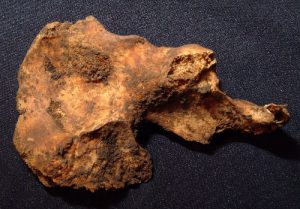There is a tendency to think that cancer is a relatively new disease, but this is not the case. It is certainly true that there has been a growth in its incidence in the ‘developed world’, but whether this is due to better diagnosis or to lifestyle is a moot point. It may not have been expected that the archaeological record would produce evidence of cancer. However, the human remains i.e. bones, found during the archaeological dig in the former East Kirk during 2006 do show a few cases of cancer affecting bone.
The prostate gland is a small gland located just below the outlet of the bladder in males. The prostate gland was first described anatomically in 1536. Prostate cancer was not specifically recorded until 1853. Prostate cancer occurs when a growth starts within the gland. In most cases the only problem it is likely to cause is with urinating. However, like other cancers, it can spread outside the prostate into the lymph or metastasise into bone with the back and the hip the common sites of these bony metastatic tumours. It is at this stage that this cancer can become a threat to life.

The photograph shows part of the pelvis of an older man. Towards the top left of the bone are ‘spicules’ – the roughened area – which are characteristic of metastatic prostate cancer. It is likely that he developed considerable pain in his pelvis as a result, a common indication of progression of prostate cancer. We do not know whether this is what caused his death. The date when this man died is not known, but it was somewhere between 15th and 18th century, so was well before the disease was recognised.
(The photograph is copyright Aberdeen Art Gallery & Museums Collections and is used with permission).